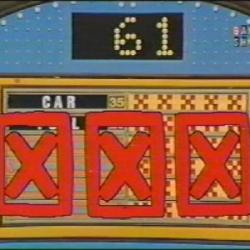If you are reading a newspaper article online then, in most cases, it will either be:
A) an article that has been edited to fit the physical page and not the Web site you're looking at; or
B) an article that has not been edited.
Let's consider Category A first. The space constraints of the printed page do not exist online. It would seem, then, that stories that have been trimmed (or hacked) to fit into a cramped print news hole ought to be posted to the Web in their entirety. The problem is there's no system for this, no method for editing stories in this way. And the oddity of posting cut-to-fit stories online is just a trivial side effect.
The editorial process of daily newspapers — developed and refined over more than a century — is designed to edit stories for a single platform: the print edition. This is the only editorial process most newspapers have. Over the past dozen or so years, almost all newspapers have added new, online publishing platforms, but they have not added any new editorial systems, or even made significant changes to the existing one.
So the print edition is, for nearly all newspapers, the only edited edition. Thus the only way to provide online stories that have been edited is to rip them from the pages of the print edition.*
The editorial process for a daily newspaper is, of course, a daily process. It is a 24-hour cycle designed around a series of deadlines all stemming from the kid on a bike who tosses the newspaper onto the most geographically distant subscriber's lawn porch. If subscribers have been assured that the paper will be there by 7 a.m., then the kid with the bike needs to get the paper by 6 a.m., which means the guy with the truck who gets the paper to the kid with the bike will need to get the paper by … etc. It's really a rather marvelous feat, accomplishing this logistical miracle every day, day after day, 365 days a year.**
The Web, however, is not based on a similar 24-hour cycle. Both newspapers and their online readers grew dissatisfied with "online editions" that updated once a day, like the pages of a calendar. So now most papers (that word is telling) have begun posting regular updates throughout the day. Stories are posted before they appear in the print edition, which is to say, before they have been through the paper's editorial process. Hence the proliferation of stories from Category B.
I should note here that these Category B stories tend, eventually, to be replaced by their edited versions (usually late at night, after the print edition goes to press). This tends sometimes to produce conspiratorial misinterpretations suspecting some kind of Orwellian sleight of hand. The explanation is nothing quite so malevolent, but rather something that may actually be worse: the original, Category B story was posted before it was edited. It was read, quickly, by the person who typed it and, if time allowed, which it probably didn't, by one other person.
The discrepancy between the two versions of the story is the result of this awkward transitional period in newspapers' entry into the online world. They've met one challenge by developing systems (or, at least, ad hoc methods) for producing online content more quickly than the old 24-hour cycle. But they haven't yet met — or even really begun thinking about — the challenge of how to edit all of this content as quickly as they can create and post it. That's a big problem. Every paper's stated goal is that their online content should meet the same standards as the print edition, but there is no structure in place to reasonably consider this a credible expectation.
Newspapers now have a two-platform publishing structure: print and online. Yet newspapers still only have a one-platform editing structure: print. Some few newspapers have responded to this problem by beginning to create an editorial system for their online content that parallels the system in place for their print content. That might be better than nothing but, in an era of ever-shrinking newsrooms, this seems likely to result in an already overworked and nearly overwhelmed copy desk being divided into two, smaller, thoroughly overwhelmed copy desks. I don't think that is where the future lies.
The future, I think, requires a larger but more nimble cross-platform copy desk — an editorial structure and infrastructure not strictly tied to any single platform. All content — stories, columns, photos, weather and wire service items — would flow through it and be edited for accuracy, style, grammar and spelling, emphasis, relevance, etc., so that it was ready for public consumption in whatever platform is available, whether that be print, online, multimedia, town crier or interpretive dance. Some editing would still be required at the point of publication as the otherwise-ready-to-go content is shaped to fit the form and space of the various platforms, and I'm sure it will take quite a bit of experimentation to figure out how to balance that work with the cross-platform work. But I also think it's well past time newspapers began experimenting along those lines.***
Our ad hoc, awkward transitional period is starting to look, as John Kerry might say, like a rather permanent concept.
– – – – – – – – – – – –
* This is, of course, not a very efficient process. Turning pixels into ink and back into pixels is not the shortest distance between two points. It involves an over-promising and under-delivering piece of software called a CMS that converts the stories from laid-out pages into their component pieces and imports them into a database. The templates on the paper's site then pull these component pieces out of the database and into the story templates and voila!
Except not so much with the voila. In reality this process works about as well as Jeff Goldblum's transporter in The Fly.
Part of the problem is that CMS software is premised on the notion of error-free human input, in this case requiring reporters and page designers to ensure that the work they do for human readers is also meticulously coded so that it can be read by an extremely fastidious nonhuman reader — the CMS. What could possibly go wrong?
What all this means is that the parts of most stories still have to be sorted and reassembled a bit by an actual human type person. That human winds up doing quite a bit of cutting-and-pasting, not to mention a good bit of retyping. All of which means that the edited stories from the print edition will be substantially altered but not substantially re-edited by more than one set of eyes on their way to the Web. So, really, Category A stories can't be considered edited versions either.
** Seriously. The Post Office loves to brag about the whole "neither snow, nor sleet, nor hail" business, but they take Sundays and holidays off. Wimps.
I've mentioned before my favorite example of how this daily miracle gets taken for granted: in the final moments of the (awful) Resident Evil movie, as Milla Jovovich walks the abandoned streets of the city, a newspaper flutters by with the headline "The Dead Walk." The assumption, apparently, is that even if everyone else has fled or been eaten by zombies, the newspaper will still be written, edited, printed and delivered, on deadline.
In the real world, The Times-Picayune went without a print edition for a bit during Hurricane Katrina, but they never stopped publishing online — prompting their sweetly boastful T-shirt slogan, "We publish come Hell and high water."
*** What ultimately prompts this may turn out to be a court-imposed financial incentive. Copy desks don't just correct grammar and spelling, they also vigilantly protect against libel. It's only a matter of time before, somewhere, some paper posts a Category B story that contains something libelous and, therefore, costly.















